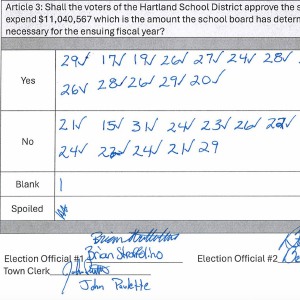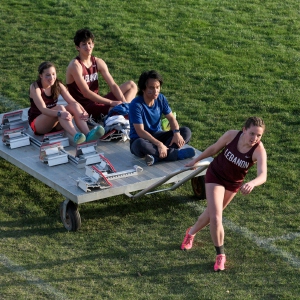Column: High school hallways may be a danger zone
| Published: 05-14-2020 10:10 PM |
Every year for 25 years I spent 189 days inside a school building. That’s 4,725 days, according to my calculator. So I’m familiar with the territory. That’s why I’m concerned about bringing students back to school when the COVID-19 shutdowns finally end.
The problem? Passing in the hallways.
It’s less of an issue for primary schools, and perhaps middle schools. But in high school, the hallways are filled with students every 45 minutes (or every 89 minutes, if the school is on block schedule).
Hallway time — three to five minutes, depending on how much freedom the administration allows the students — is notorious for romance, fights, preening and roughhousing. Add teenage shouting and gabbing to the mix and droplets of the novel coronavirus, along with smaller aerosol particles, will become airborne on the respiratory projectiles of teenage “conversation.”
In the high school where I taught, when the bells rang, students shot out of the classrooms and the hallways were suddenly jammed with 300-400 moving bodies. If someone opened a locker, it could cause a traffic jam. And some high schools have thousands of students.
Let’s be frank. The hallway of a high school between classes will be a canyon of coronavirus droplets. If we choose to maintain this model, we may be putting student lives at risk.
Can administrators insist that 400 students wear face masks in hallways? I doubt it. Even if they could, who is going to police such a rule and feel safe in the process?
Don’t get me wrong, I don’t think classrooms are magically exempt from contagion. But desks can be separated, students can wear masks and the teachers can ensure that.
Article continues after...
Yesterday's Most Read Articles
 Hartland voters successfully petition for school budget revote
Hartland voters successfully petition for school budget revote
 JAG Productions announces closure, citing ‘crisis facing the arts’
JAG Productions announces closure, citing ‘crisis facing the arts’
 Hanover’s Perreard may soon capture the attention of collegiate coaches in two athletic pursuits
Hanover’s Perreard may soon capture the attention of collegiate coaches in two athletic pursuits
In addition, class sizes can be reduced. When I was young, during the baby boom, schools were overcrowded. So they started what was then called “double sessions” — half the students went in the morning and half in the afternoon. When schools resume now, they may have to go to triple sessions: something like 7:30-10:30, 10:30-1:30 and 1:30-4:30. In that arrangement, breakfast, lunch and snacks can be brought by cafeteria workers to each classroom.
This may mean more teachers, and more expense. But social distancing in classrooms can be accomplished, one way or another.
But what about the hallways?
Changing rooms for each class may have to be abandoned. We may have to go to a system in which students stay in one classroom and their teachers come to them, wheeling their mobile carts full of books and curriculum goodies. That way, the only people in the hallways will be teachers, custodians and the occasional individual student with a pass for the restroom, for example.
It will be like going back to the one-room schoolhouse, only in a 50-classroom building.
This will drive guidance counselors and curriculum specialists crazy. They are used to being able to play with a full deck of classrooms and courses and shuffling students in and out every 45 or 89 minutes, according to student needs or preference. This flexibility likely will have to be sacrificed, at least for a while.
And how do we get the kids in and out of school if not through the hallways? Just as in a fire drill, students will have to stay together by class. They will assemble outside the school building by class, and then enter class by class for each session. They will leave class by class, also. And, since almost every student has a cellphone, there may be a way of organizing such a hallway and classroom procedure digitally.
This minimizes, but does not eliminate, the coronavirus canyon effect. It will be more like a flock of birds flying in formation — or, in the case of a school with 30 classrooms, 30 flocks of birds — rather than a river of human beings flooding the hallway at the beginning and end of each session.
There will be problems, discipline and otherwise. There will be unhappiness and boredom. But we can either empty the school hallways, or fill the hospital beds. The choice is ours.
Paul Keane is a retired Hartford High School English teacher.

 Editorial: Chris Sununu’s moral vacuum
Editorial: Chris Sununu’s moral vacuum Editorial: Gambling tarnishes America’s sporting life
Editorial: Gambling tarnishes America’s sporting life By the Way: A white nationalist’s many mistruths
By the Way: A white nationalist’s many mistruths Column: The age-old question of what to read
Column: The age-old question of what to read
